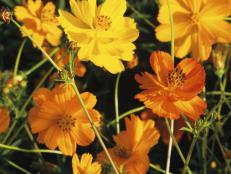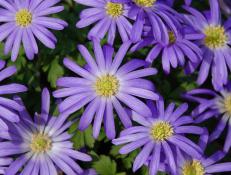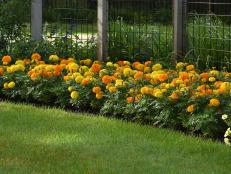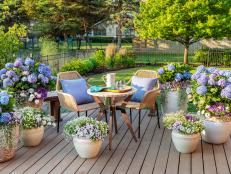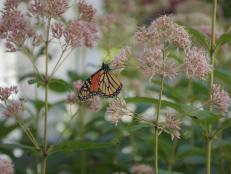Flowers That Change Colors

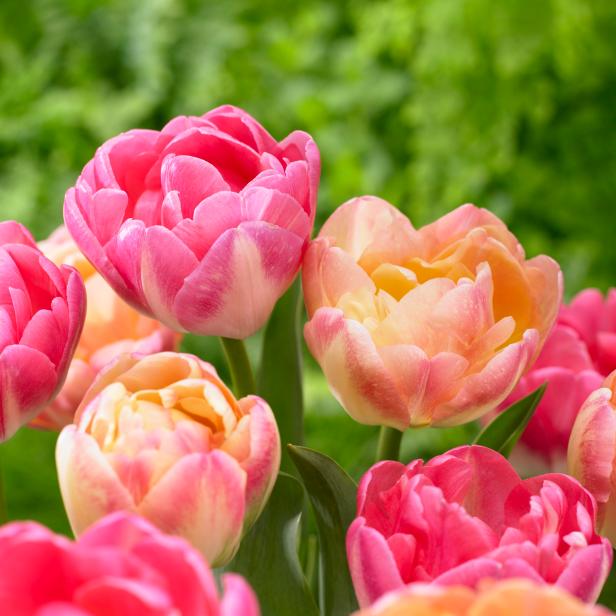
Courtesy of Longfield Gardens
Our gardens are always changing. It’s not just that our flowers bloom and die; many also change colors during their often short lives. Watching them go from pastels to richer, warmer shades, and then age to soft, muted colors, makes for an irresistible show.
As rose-lovers know, some roses change colors unexpectedly. A bush that produced vibrant pink blooms one year can bear peach or apricot blossoms next season. Or a plant with pink, yellow, and crimson roses on the same bush can suddenly yield only the crimson ones.
These kinds of changes can happen when a grafted rose sprouts from below its graft union, the swollen-looking spot where the rootstock was joined to the scion (the top part of the plant that produces the leaves and flowers).
Rootstocks, which are typically hardier or stronger than the scions anyway, take over, especially if the upper branches are killed by cold weather.
Some color changes are due to natural mutations. The developers of Knock Out roses once spotted a single branch with light pink blooms on a red Knock Out bush. They grafted the odd branch—called a sport—onto other rootstock to create a new, shell-pink variety, Knock Out ‘Blushing.’
Weather can cause color changes, too. Intense sunlight and high temperatures can fade flowers, while cool weather can intensify colors, making them richer and deeper.
Colors also vary as a flower ages. The buds on a ‘Joseph’s Coat’ rose, for example, are usually cherry red. As they open, they take on coral tones and reveal gold centers. As the flowers mature, they turn red again. Hydrangea ‘Vanilla Strawberry’ opens white flowers with pink centers that gradually turn deep, strawberry-red. If left uncut for a winter garden, they mature to the color of parchment.
Of course, we can manipulate hydrangea colors, too. If we raise the pH of the soil (that is, make it more alkaline) blue flowers turn pink. If we lower it (increase the soil’s acidity), pink flowers turn blue or blue-lavender. This doesn’t work with white hydrangeas, however.
Even stress can alter the colors of flowers like peonies and iris. In addition to too much or too little sun, different amounts of water, or transplanting them may make a plant work harder to produce new roots or leaves, diverting some of the energy it would usually put into petal colors.
The colorful patterns on beautiful tulips are the result of viral infections . The viruses cause the colors to “break" into attractive stripes, speckles, and featherings. Today, commercial tulip growers deliberately introduce some infections to create peppermint-stick patterns and other mosaics.
Bulb growers have also developed a series of “color changing tulips” that can be planted in fall for a dramatic springtime show. The flowers look quite different when they mature. Here are few varieties to try:
‘World Expression’ - This tulip starts out a soft, buttery yellow with rose-red “flames” at the base of each flower. As they age, the petals whiten and the reds intensify.
‘Suncatcher’ – When planted in fall, ‘Suncatcher’ develops sturdy stems for a spring cutting garden. The bright yellow base of each tulip is splashed with cheerful, cherry red.
‘Banja Luka’ – This tulip’s large, firecracker red and yellow feathering stand out in the garden. The blooms open in mid-spring and last a long time.
‘Caramba’ – Stripes and swirls of hot pink and white make each ‘Caramba’ bloom slightly different from the rest. Plant the bulbs in autumn for mid-spring flowers.







